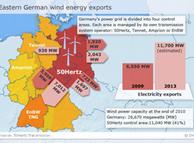I see Ford pushing the efficiency card in some new marketing (also here).
The Los Angeles County Sheriff’s Department – the largest sheriff’s department in the world – operates a fleet of 6,200 vehicles that patrol an area the size of Connecticut. In 2010, those vehicles drove more than 27 million miles. A fleet-wide 20 percent fuel economy gain would save the department at least $20 million a year at today’s fuel prices of nearly $4 per gallon.
Good overall point about saving money through efficiency.
I am curious, though, if I did not know how big Los Angeles County is why would I be familiar with or want to look up the size of Connecticut? Might as well just look up the size of Los Angeles County. It would have been much cooler if they had made a space reference like 27 million miles is a third of the way from the Earth to the Sun; or they could have said 27 million miles is longer than the circumference of the Earth at the equator. What’s the Connecticut connection?
I also am curious about the mention of a $4 per gallon fuel price. Consumers clearly demonstrate that pump price is not the only influence, but maybe Ford is emphasizing that particular price for a reason. Car companies seem to have the odd fixation on a belief that people only care about efficiency when pump prices rise above a certain point. Maybe $4 is Ford’s magic number.
The pump price is a red herring to me. It distracts from the massive amount of time saved by fewer stops for fuel. This could be an even more critical point for the police — not having to stop for gas during a chase. How many more hours can the police be on the beat now with fewer stops for fuel?
The British Navy famously innovated with anti-fouling chemistry (observing copper sheets left in the ocean attracted the fewest barnacles) in order to keep their warships at sea longer and running faster…in their defeat of Napoleon’s forces.
I usually try to explain the efficiency angle like this. You can’t decide what you will pay at the pump (the price is always fluctuating beyond your control) but you can decide how often you want to stand around holding a nozzle and inhaling fumes. Do you really want to spend all that time at the pump, let alone have to divert to refuel when you need to chase and intercept? Forget pump price, there are many other/better reasons why efficient engines are superior.
From that perspective I hope I am not alone in thinking it is exciting to hear Ford boast of efficiency gains. I am less excited to see that they settled on just a 20 percent fuel economy gain.
The new Ford Police Interceptors, both sedan and utility vehicle, can be ordered with a choice of three powerful V6 engines that deliver more horsepower and better fuel economy than the 250-horsepower, 4.6-liter V8 in today’s Crown Victoria police car.
The base 3.5-liter Duratec V6 engine in the new Police Interceptor sedan will deliver at least 280 horsepower. Also available in the sedan is Ford’s award-winning EcoBoost™ twin-turbo V6 that will have at least 365 horsepower. The EcoBoost-equipped Police Interceptor comes standard with all-wheel drive that enhances handling and safety during high-speed pursuits. The new Police Interceptor utility model will be powered by a 3.7-liter V6 and features all-wheel drive delivering at least 300 horsepower.
I refer you to my post on the 40mpg car designed by Ford and made by Tata for police in Europe.
The Jaguar XF Diesel S is powered by a 3.0-liter AJ-V6D Gen III diesel engine that delivers 275 hp. The Diesel S accelerates from 0-60mph in just 5.9 seconds, while top speed is limited to 155 mph.
That car has the same horsepower rating as the new Police Interceptor sedan in Los Angeles, yet double the mpg. Why are police in America getting shafted (pun not intended) by Ford on this technology? The County could be saving a whole lot more.
Here are some guestimates, based on the Ford press release. It says the current police car gets between 14 mpg and 21 mpg. A new engine will improve by 20 percent, which puts it at 17 mpg to 25 mpg.
Those are modest numbers, at best. Moving to a 40 mpg Jaguar XF Diesel S would achieve a 90 percent improvement ( (40-21) / 21 = .9 ).
The $20 million in savings from 20 percent better efficiency is nothing to sneeze at yet a 90 percent efficiency gain would save….
I have so far left this topic within the Ford family. Maybe we should run some numbers for a 125 mpg diesel-electric hybrid Volvo (285 hp). ( (125-21)/21 = 4.95 ) !
Just for the sake of argument lets use the 27 million miles and say they are driven at 21 mpg. That gives 1,286,000 gallons at $4 each for a total of $5,143,000.
The same 27 million miles driven at 125 mpg would be 216,000 gallons at $4 each for a total of $864,000, and a savings of $4,279,000. Hmmm, where did Ford find 20 million?
Imagine the Los Angeles County police fleet running with better performance and yet a 495 percent fuel economy gain. They might just want to get Volvo to change the marketing campaign.
Again, we are just talking pump price. When you factor in less time spent at the pump the savings and benefits to taxpayers are pushed even higher. And that’s before we even get started talking about police cruisers being able to sneak up on criminals with zero-emission zero-noise hybrid-diesels




